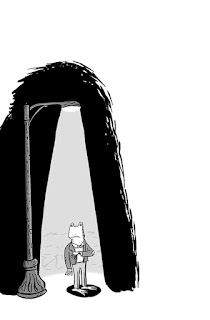2013
Notable Children’s Books in the Language Arts
The charge of the seven-member national committee is to select thirty titles each year that best exemplify the criteria established for the Notables Award. Books considered for this annual list are works of fiction, non-fiction, and poetry written for children, grades K-8. The books must meet one or more of the following criteria:
- deal explicitly with language, such as plays on words, word origins, or the history of language;
- demonstrate uniqueness in the use of language or style;
- invite child response or participation. In addition, books are to:
- have an appealing format;
- be of enduring quality;
- meet generally accepted criteria of quality for the genre in which they are written.
43 Cemetery Road: the Phantom of the
Post Office, by Kate
Klise, illustrated by Sarah Klise, published by Houghton Mifflin.
A Leaf Can Be, by Laura Purdie Salas,
illustrated by Violeta Dabija, published by Lerner.
and then it's spring, by
Julie Fogliano, illustrated by Erin Stead, published by Macmillan.
Bear has a Story to Tell, by
Philip Stead, illustrated by Erin Stead, published by Macmillan.
Book of Animal Poetry, edited
by J. Patrick Lewis, published by National Geographic.
Cat Tale, by Michael Hall, published by
HarperCollins.
Chopsticks, by
Amy Krouse Rosenthal, illustrated by Scott Magoon, published by
Disney/Hyperion.
Each Kindness, by
Jacqueline Woodson, illustrated by E.B. Lewis, published by Penguin.
Encyclopedia of Me, by
Karen Rivers, published by
Scholastic.
Endangered, by Eliot
Schrefer, published by Scholastic.
Forgive Me, I Meant To Do It: False Apology
Poems, by
Gail Carson Levine, illustrated by Matthew Cordell, published by
HarperCollins.
Hades, Lord of the Dead, by
George O'Connor, published by Macmillan.
His Name Was Raoul Wallenberg, by Louise Borden, published by Houghton
Mifflin.
House Held Up by Trees, by
Ted Kooser, illustrated by Jon Klassen, published by Candlewick.
I Have the Right to be a Child, by Alain Serres, illustrated by
Aurelia Fronty, published by Groundwood.
I Lay My Stitches Down, by Cynthia Grady,
illustrated by Michele Wood, published by Eerdmans.
Lions of Little Rock, by
Kristin Levine, published by Penguin.
Moonbird, by Phillip Hoose, published by
Macmillan.
No Crystal Stair, by Vaunda Micheaux Nelson,
illustrated by R. Gregory Christie, published by Lerner.
Obstinate Pen, by Frank Dormer, published by
Macmillan.
Sadie and Ratz, by Sonya Hartnett, illustrated by
Ann James, published by Candlewick.
See You at Harry's, by
Jo Knowles, published by Candlewick.
Snakes, by Nic Bishop, published by
Scholastic.
The One and Only Ivan, by Katherine Applegate, published
by HarperCollins.
Unbeelievables, by
Douglas Florian, published by Simon & Schuster.
Unspoken, by
Henry Cole, published by Scholastic.
Walking on Earth & Touching the Sky, by Lakota Youth at Red Cloud
Indian School, illustrated by S.D. Nelson, published by Abrams.
Water Sings Blue, by
Kate Coombs, illustrated by Meilo So, published by Chronicle.
Wonder,
by R.J. Palacio, published by Random House.
Z is for Moose, by Kelly Bingham, illustrated by Paul
Zelinsky, published by HarperCollins.
Tracy Smiles, Chair; Donalyn Miller, Patricia Bandre, Yoo Kyung Sung, Barbara Ward, Shanetia Clark, and Jean Schroeder.
















